Japanese Art - Blog Posts
見返り美人図


Today I decided to dress and pose as a famous painting: 見返り美人図 otherwise known as Beauty Looking Back.
This painting was a singular stand alone piece made by Hishikawa Moronobu who is mostly known for his innovative ways regarding the method of coloring for ukiyo-e woodblock. This method was very influential due to how my house simply only had black print before then.
To showcase the painting’s popularity even more so, the “Beauty Looking Back” painting was adopted as the pattern for the first Japanese postage stamp after WW2 in 1948.


Gundam 7 E-421
So pretty!~

'Bird and Peonies' (Edo period) by an unknown Japanese artist.
Woodblock print.
Image and text information courtesy MFA Boston.
I love Fujio Kito's photographs of playgrounds around Japan. There are so many artful and thoughtful designs for play spaces and structures throughout the Japanese cultural landscape.

東京都狛江市多摩川住宅ニ号棟
中央公園
※多摩川住宅ニ号等も建替えが決定しました。
★多摩川住宅の写真展をしたいので、調布市・狛江市で団地の公園遊具の写真展を開催できるスペースを探してます。オススメの場所などありましたらご連絡ください!
#公園遊具 #公園 #playground #park #playsculpture #artwork #photoism #tokyo #japantravel
#多摩川住宅 #多摩川 #団地 #石の山 #調布 #狛江

Jiro Yoshihara, Please Draw Freely, 1956. Paint and marker on wood. Installation view during the Outdoor Gutai Art Exhibition in Ashiya Park, Ashiya, 27 July – 4 August, 1956.
Yoshihara was a leading member of the Japanese avant-garde Gutai Group of visual artists, known for their physical and oft-confrontational artworks. A lesser discussed aspect of their legacy is their contributions to art education, which truly highlight the potency and potential of communal creativity. I wrote about the latter aspect on Artfully Learning in a post called "The Gutai Group: Play, Pedagogy and Possibility." Read it here: https://theartsandeducation.wordpress.com/2022/08/03/the-gutai-group-play-pedagogy-and-possibility/

Art - Kawai Gyokudo (1873-1957)


Books that I bought for May. I've already had three of them on my tablet, and since I liked them, I decided to buy their paperbacks. Siddhartha and Kitchen are the ones that I'll be reading for the first time. I bought some stuff from Daiso as well, as there was a sale going on there.
I’ve defiled the very first page of my new journal—the one destined to be my sacred commonplace book. A grand beginning, now tainted beyond repair. Truly, my talent knows no bounds.(sarcasm, of course)
I tend to get a bit dramatic...... nevermind.


Intriguing...

Have any nightmares lately?
This figurine represents the Baku (獏 or 貘). The baku’s story originated in Chinese mythology as the mo (貘), believed to resemble a giant panda. It later evolved into a nightmare-warding figure in Japan.
Early depictions illustrate the baku as a chimera with the trunk and tusks of an elephant, the ears of a rhinoceros, the tail of a cow, the body of a bear, and the paws of a tiger. While this version was said to ward off pestilence and evil, its dream-devouring ability emerged later in Japanese culture. By the late 18th century, the baku as known as the guardian of sleep. One legend describes how a child waking from a bad dream could call out, “Baku-san, come eat my dream,” repeating it three times to summon the baku.
Folklore warns that calling the baku too often could have consequences—if left unsatisfied, it might consume not just bad dreams but also the person’s hopes and desires.
Image: Baku, Mythical Animal. 18th century. White porcelain (Hirado ware), H. 7/8 in. (2.2 cm); L. 1 7/8 in. (4.8 cm). The Metropolitan Museum of Art.

Chôkôsai Eishô
Young Man with Falcon. c. 1799, woodblock print, 39 x 26 cm. Museum of Fine Arts, Boston

Tigresa
Raízes vermelhas ( Akane 茜色)
Ayanami - nanquim, #0 2019
茜色の色情報
色の名前茜色
読み/綴りあかねいろ
系統色名dp-R(濃い赤)
マンセル値4R 3.5/11
webcolor#b7282d
RGBR(赤):183 G(緑):40 B(青):45
CMYKC(シアン):0 M(マゼンタ):90
Y(イエロー):70 K(ブラック):30

Atsuko Tanaka (1932-2005) — Gate of Hell (vinyl paint on canvas, 1965-1969)
The Incarnations of Kimiko Yoshida

LOUIS XIV AS THE RISING SUN IN "LE BALLET DE LA NUIT" AT VERSAILLES. SELF-PORTRAIT, 2010. COURTESY PACO RABANNE

SULTAN SALADIN THE GREAT. SELF-PORTRAIT, 2010. COURTESY PACO RABANNE

GODDESS OF WAR ATHENA BY KLIMT. SELF-PORTRAIT, 2010. COURTESY PACO RABANNE

WISE KING MELCHIOR BY MANTEGNA. SELF-PORTRAIT, 2010. COURTESY PACO RABANNE

THE GOLDEN BRIDE FROM FEZ, SELF-PORTRAIT 2005. COURTESY OF THE ISRAEL MUSUEM, JERUSALEM

QUEEN OF FRANCE MARIE DE' MEDICI BY RUBENS. SELF-PORTRAIT, 2010. COURTESY PACO RABANNE

EL CONQUISTADOR HERNAN CORTES AS EL DORADO. SELF-PORTRAIT, 2010. COURTESY PACO RABANNE

LAST SAMURAI KATSUMOTO. SELF-PORTRAIT, 2010. COURTESY OF PACO RABANNE.

THE TORERO BRIDE WITH A BLACK SUIT OF LIGHTS , REMEMBERING PICASSO. SELF-PORTRAIT 2006.

ASSOMPTION OF VIRGIN MARY BY TINTORETTO. SELF-PORTRAIT, 2010. COURTESY OF PACO RABANNE.

SAINT AUGUSTIN BY EL GRECO. SELF-PORTRAIT, 2010. COURTESY OF PACO RABANNE.

WOMAN OF ALGIERS BY DELACROIX. SELF-PORTRAIT, 2007-2009

PHARAON BY GUSTAVE DORÉ, SELF-PORTRAIT, 2007-2009

SISTINE MADONNA BY RAPHAEL. SELF-PORTRAIT, 2010. COURTESY OF PACO RABANNE.

KING OF FRANCE FRANCOIS I BY JEAN CLOUET. SELF-PORTRAIT, 2010.COURTESY OF PACO RABANNE.

JUDITH BY CRANACH THE ELDER. SELF-PORTRAIT, 2010. COURTESY OF PACO RABANNE.

THE CAPRICIOUS GIRL BY WATTEAU. SELF-PORTRAIT, 2010. COURTESY OF PACO RABANNE.

ZAPATA BY DIEGO RIVERA. SELF-PORTRAIT, 2010. COURTESY OF PACO RABANNE.

QUEEN MARIANA OF AUSTRIA BY VELASQUEZ. SELF-PORTRAIT, 2010. COURTESY OF PACO RABANNE.

HECATE, THE GREEK GODDESS OF THE MOON AND THE SPIRIT OF THE DEAD, BY WILLIAM BLAKE. SELF-PORTRAIT, 2010

DON QUIXOTE BY PICASSO. SELF-PORTRAIT, 2010. COURTESY OF PACO RABANNE.

THE SILVER BERBER BRIDE, MOROCCO, EARLY XX th CENTURY. SELF-PORTRAIT 2005. COURTESY OF THE ISRAEL MUSUEM, JERUSALEM

THE MEXICAN BRIDE, SELF PORTRAIT 2012

THE RED EGYPTIAN BRIDE (HARRY WINSTON). SELF-PORTRAIT, 2008

THE BRIDE GRAND COMMANDEUR DE LA LEGION D'HONNEUR. SELF-PORTRAIT 2006

THE RED PALESTINIAN BRIDE , EARLY XX th CENTURY. SELF-PORTRAIT 2005. COURTESY OF THE ISRAEL MUSUEM, JERUSALEM

THE MAO BRIDE RED GUARD RED. SELF-PORTRAIT, 2009
"A fundamental part of Japanese culture is linked to the notion of disappearance.
Unlike the West, in Japan we use makeup in order to disappear, to erase our identity. The basic idea behind my makeup is tied to the geisha’s traditional use of a ghostly-white makeup, called ” doran ” which leaves only the outline of her eyes and bright red lips visible. Makeup in Japan is not perceived as a way of making a woman become more beautiful, but rather as a way of transforming her into an abstraction of a woman. She becomes an “idea of a woman “, rather than an “ideal woman.” It is a way of dying." text by Barbara Oudiz
Transformation, Metamorphism, Shape Shifter. These are the words that come into my mind when I look at Kimiko Yoshida and her impacting self portraits. All the pictures use always the same setting, same subject, same lighting, same framing. She does her own make-up, lighting and design using a Hasselbald camera with no retouching or editing.
I find these images so deep and mesmerising, the Series "Painting, Self- Portrait" where she transforms herself into people from famous historical portraits with pieces from Paco Rabanne's Haute Couture collections works of art in themselves are my personal favourites.
Do go to her website and see her extensive portafolio of work I had a hard time not putting all her work on this post, then this would just be pages and pages long. I spent hours reading, there are also lots of in depth articles on her and great interviews, Kimiko you are a fascinating lady!
Am hoping that she will do a show in London someday soon.
All images Via Kimiko Yoshida
A Hannya art I drew with a single color if I remember correctly, rocking a pair of earrings!
Fun fact: I've refiltered this to red and created myself an etui with this!


“Kintsugi Heart” (2023) - Mikey Sol
Animated and Illustrated in Procreate!
https://www.instagram.com/mikeyyysol/
@mikeyyysol
Fav dramas review : Heaven's Coin
Idk how to explain the ways I love old japanese dramas, but it's truly something occasionally and randomly I want to talk about. Hardly anyone has reviewed, recapped or discussed some of my favorite stuff in the media, but... I just feel that if only one person who never heard about it or hasn' t watched it in years can learn about a beautiful piece of work. Isn't that what art is all about. Countless times I've picked up albums that never charted or flew under the radar, but somehow it was either the best thing I'd listened to in years or spoke to me so deeply and directly, I was like I'm so glad nobody ever picked up this thing. I'm so glad it collected dust for years in a bookstore or comic shop cause if not then I'd probably never find it.
Especially in the internet age where due to how for profit everything has become it's no longer easy to find out about things that are no longer for sale or that have been locked in a vault so to speak. Jdrama's was a booming industry. Japan had dominated asian cinema for a long time since the 1950s possibly even before. They are master storytellers and love tucking in messages of morals all throughout the story even if the story is presented in an amoral way.
They make it clear that even though the villain isn't ever going to be truly punished and the hero might suffer more than they ever will. Right and wrong is so obvious even a child could understand it.
p.s this review is very bias

Main characters Takumi, Aya and Shuichi (with his annoying self)
That is where Heaven's Coin come in. Loosely based off of a German fairy tale of a girl who gives away all of her coins to everyone until she is left with nothing but later given the stars in return.
First off this is taking place in the 90s the pinnacle of Dramas putting disabled characters in the forefront of television. To americans this is no big deal because we see in comparasion a lot of diversity in television. But in Japan and Asia due to discrimination it is considered taboo and a lot of time disabled characters were often not shown or ignored.

The main character Aya is amazing and is the strength of the entire show. She is shown as smart, crafty and able to think her way around situations where people underestimate her. She was extremely well written and not made into a stereotype at all. Women in this show surprisingly are not cliche like you would assume coming from a conservative country like Japan. They all have a distinct personality and go toe to toe with the male character. Not like you would see in modern shows where women are kind of masculinized in order to seem tougher than men, nor like when women catch temper tantrums to get what they want. In fact the female characters seem more level headed and it's the male characters that are more irrational and emotional. Usually acting in their own selfish interest leaving the women to pick up the pieces and figure out how to go on. Aya was abandoned as a child and had to learn how to survive through being very perceptive to emotions, facial expressions and reading lips. She doesn't let people get in her way, but has a soft heart and puts other people before her self in pretty much every situation.
I fell in love with the character after realizing she was always sacrificing herself for others even in situations where she didn't know what was going on. I don't wanna say the character was made with a feminist lens in mind, but I do think the use of female characters in the show is multifaceted. The males have more power, but the women have more strength if that makes sense.

Shuichi is nice overall, but to me he taught me that kindness and weakness is the worst combo one can have. To me his inability to make a decision always ended up hurting those who he loved most. He was selfish and with his desire to always be the good guy and seem impartial he caused destruction everywhere he went. He never stuck to anything he said and was always going back and forth trying to have it all. I believe that concerning the love triangle he was only there to keep confusing Aya. What I mean is he only went to the small country village Aya lived to mess with his father, a big city doctor, who wanted his son to take his place. Then later on when back in the city he becomes engaged to a rich heiress breaking Aya's heart.
I understand he lost his memory and everything, but the reality is he should of taken the woman he loved with him. Getting confused and falling in love with someone else is a curveball. But he should of been a man and confessed his plans to his family instead of keeping it all hidden. That right there shows that he was ashamed. Aya sadly due to believing she would never find anyone who loved her passionately fell for Shuichi because she believed he was the first and only person who would ever love and care for her, so she should take what she can get. Even after everything was settled Shuichi still couldn't be a man and do what he needed to do for Aya. But in the end Aya was abandoned as a child so she was used to being ignored and avoided. So Shuichi's lame I'll love you from afar style worked for her because it was what she was used to. Anyway personally he gets on my nerves a bit and should have left Aya alone after he got his memory back.

Last but not least, Takumi. Portrayed as the loyal son to Shuichi's prodigal son......or vice versa. He is the one who stayed in the family and did as his parents desired. He is all the more screwed up for it to. Not only is he a playboy with mother wounds, he also has dad issues. He's shown as a screwed up hopeless individual. He's emotionally volatile and takes his anger out on anyone in his way. He is also shown as the one who tries to get in the way of Aya and Shuichi's true love. He falls in instalove with Aya and immediately becomes semi obsessed with her and stops his playboy antics and even becomes more mature and sensitive for her. Believing she is an innocent woman and can redeem him. He obviously thinks she will never have any opportunities with other men, so she is stuck with him so to speak. It seems he likes that idea very much. But when he finds out his brother is her true object of affection he snaps and turns violent on both Aya and his brother. Now saying all that it might seem like the show would end there and he'd be gotten rid of like any villain but no. Despite his outburst and violence he is almost shown to be the true hero of the show. Falling deeper and deeper in love with Aya the more he becomes aware of her affection for his brother. It may be related to his insecurity about his father loving his brother more than he loved him and wanting to beat his brother. Or remembering that he never got the sweet affection from his mother as a child and wants it from Aya. It's hard to say
The show is emotionally complex and even though I hate medical drama's typically; I couldn't help but love this show. It was interesting, emotional and had a very human vibe to it.
Aya and Takumi were the most interesting because usually it's the woman in a movie or show that wants to change herself for a guy but here it's reversed. It's Takumi who behaves more like a girl with a crush concerning Aya and works hard to both communicate with her but also win her love. It's problematic, but I can see where the writers were coming from. It's supposed to be off putting and conflicting. Shuichi was quiet and reserved and Takumi was brash and loud, but in the end Shuichi ended up hurting more people with his inaction than Takumi did with his hands.
It's from an era where writers took a bit more chances with daring storytelling...7/10 it's a short show but it's so interesting and has rewatch potential. The actors played the heck out of the characters to the point where it really felt natural.
Also yes it is on available in different places on the int. There is a third season that I have never found, it looks very tropical lmao but I doubt it takes place on the beach they just did it to look cool I think. No idea where this one is but can they please film more drama's like this it looks so Blue Lagoon (I watched it on tv when I was 15 in 2015ish idk on cable and the film style is like better than they do today there's a lifetime remake but its not very good) but anyway it looks great but impossible to find.


Was bored af and drew a lazy Oni Vergil chibi. I know its nothing pro or special, but it was really fun to make! Got me out of boredom for a while
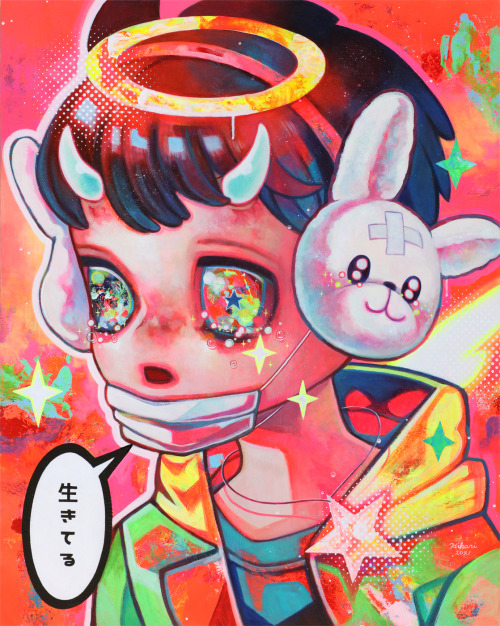
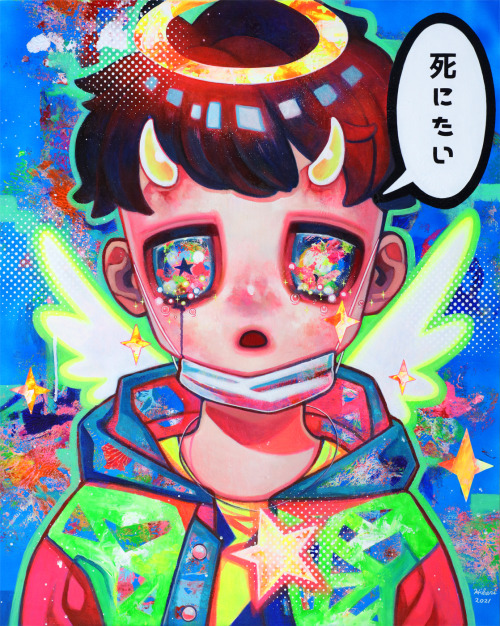
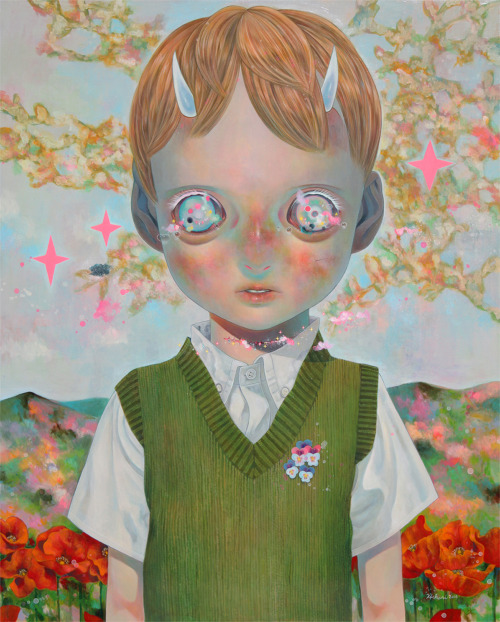
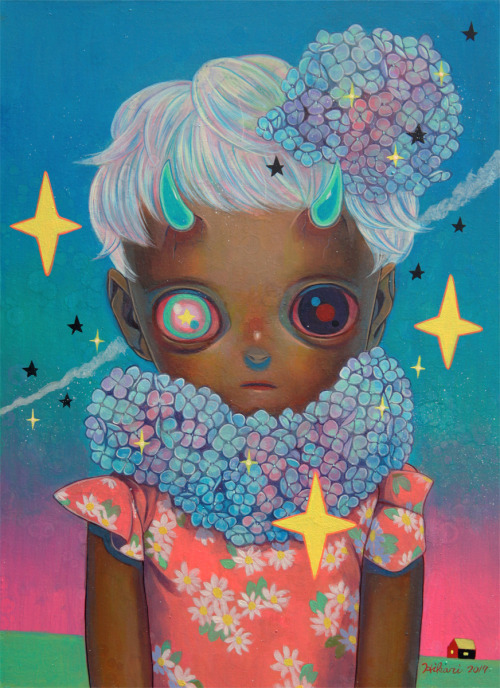
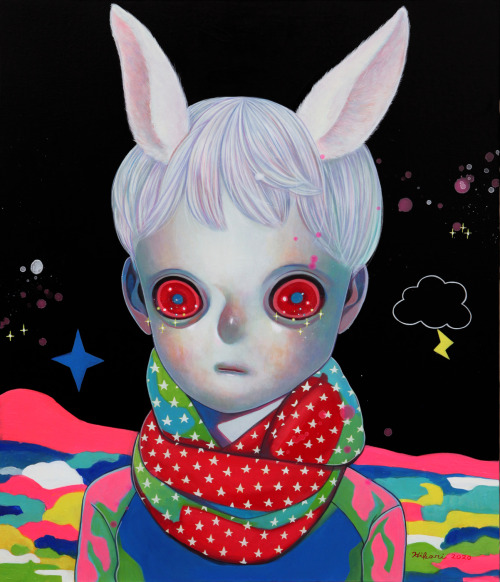
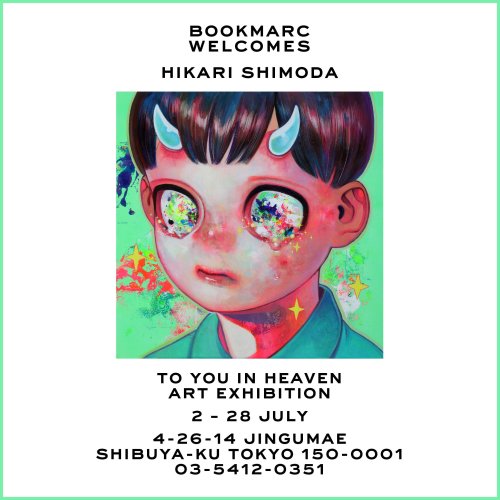
Hikari Shimoda Art Exhibit in Harajuku
Japanese artist Hikari Shimoda’s new art exhibition will open at Bookmarc on Cat Street in Harajuku, Tokyo on July 2, 2021. Exhibition Details





















